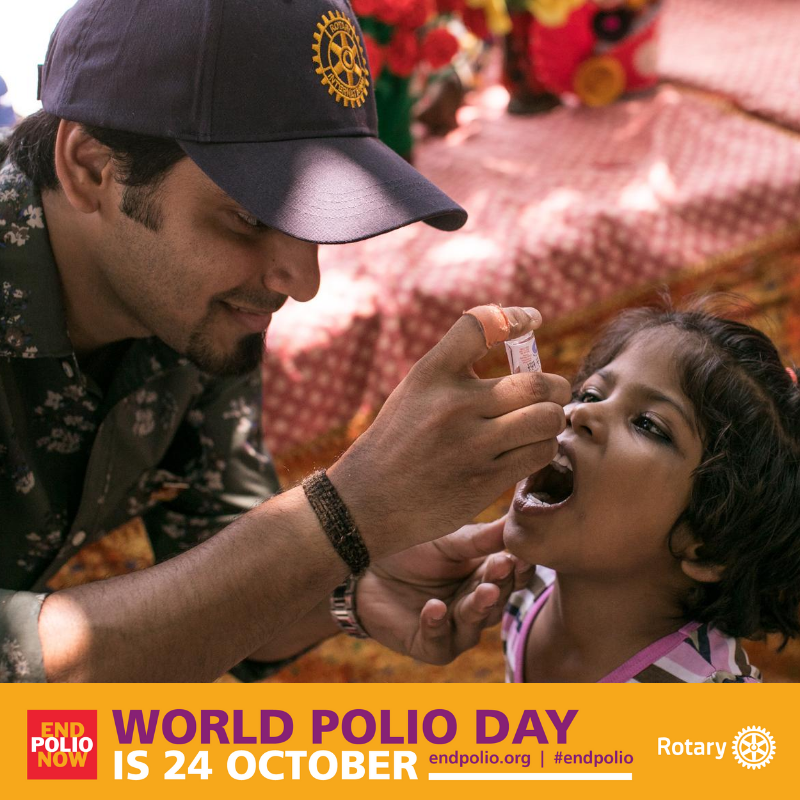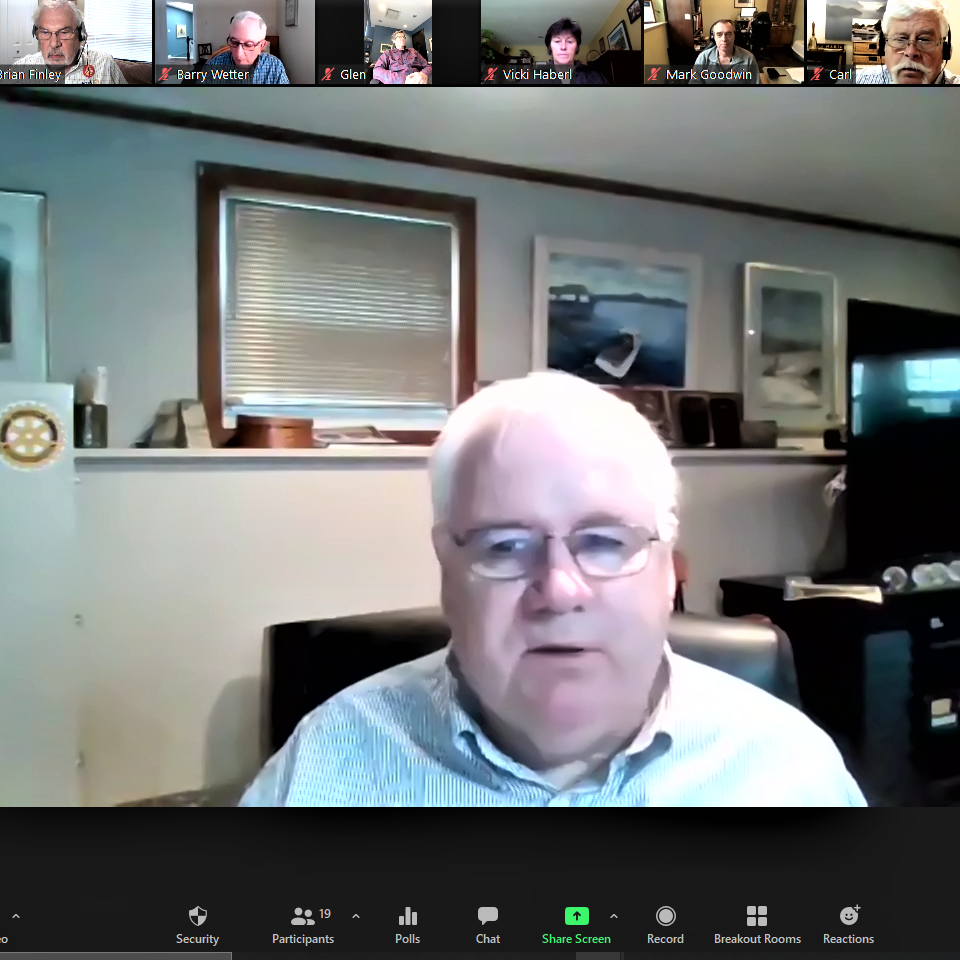
TWO. That’s the number of polio cases reported so far this year around the world. From 350,000 cases of polio in 125 countries in 1988 the two latest cases come from reports of one each in Afghanistan and Pakistan during January.
That was the positive message by Michael McGovern, Chair of the Rotary International's PolioPlus Committee when he spoke at our meeting today in advance of World Polio Day on October 24th.
Mike started his talk by thanking the Canadian Government and Canadian Rotarians for our support and commitment to the polio eradication campaign. Canada continues to be one of the foremost countries which have been steadfast contributors to the polio initiative.
He went on to describe the progress in Pakistan and Afghanistan, the last two countries where the wild polio virus is still circulating. With only 2 cases of wild polio infections confirmed in 2021, and fewer samples of the wild polio virus detected in the water and sewage, there is cautious optimism that with continued perseverance, now may be our opportunity to defeat the wild polio virus in its last strongholds.

However, despite the encouraging progress, Mike cautioned that big challenges still remain. In Afghanistan, despite reassurances from the Taliban, reaching every child with the polio vaccines will require cooperation and commitment from all levels including local leaders, health care workers and security services.
In parts of Africa and Asia, where immunization rates may be low, the number of cases caused by the mutated oral polio vaccine - circulating vaccine-derived poliovirus (cVDPV), is a major cause for concern. The new, more genetically stable, novel oral polio vaccine is starting to be deployed in high risk areas to also eradicate cVDPV.
The global polio eradication strategy has two goals:
1, Permanently interrupt transmission of all polio virus in Pakistan & Afghanistan.
2. Stop transmission of cVDPV and prevent any polio outbreaks in polio-free regions.
We are getting closer to our goal, but we must maintain our resolve and if we do, we will fulfil our promise of a polio-free world.
 Reaching up to 400 million children per year with vaccinations, to sustain high levels of immunity, to strengthen environmental monitoring, continues to be the strategy. This requires hundreds of thousands of front-line workers going door-to-door, house-to-house, market-to-market looking for all children under the age of five to vaccinate multiple times per year. Disease surveillance is also required to detect the virus in children and the environment as the poliovirus can live for a short period of time in sewage water, as well as to determine when poliovirus circulation has stopped. |